South America is home to a stunning array of breathtaking landscapes.
From its snow-capped mountains to its treacherous jungles,
its dreamy deserts and awe-inspiring mountain ranges,
it draws in tens of thousands of travelers every year.
Some dive into outdoor adventures, trekking across rugged terrain,
while others sit back and quietly admire the majestic Andes.
South America never disappoints.
Everything here flows from the purest essence of nature itself.
······
“Each domain of nature is marvelous in its own way.”
— Aristotle
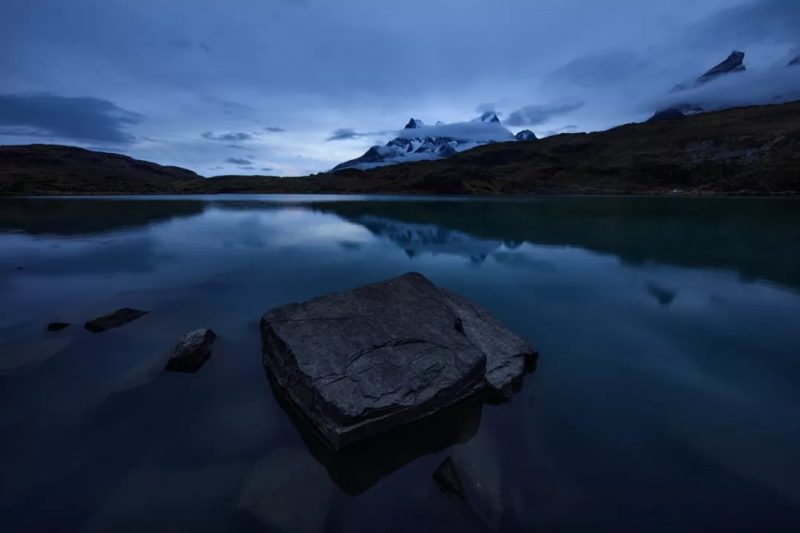
Aristotle’s famous quote fits perfectly when talking about South America. When it comes to outdoor scenery, South America is in a league of its own. The Patagonia region, along with the desert salt flats where Chile, Argentina, and Bolivia meet, boasts some of the continent’s most jaw-dropping landscapes. You’ll find iconic spots here like Torres del Paine National Park, Mount Fitz Roy, the Perito Moreno Glacier, and the surreal Uyuni Salt Flats.
For anyone who loves to travel, South America is a dream destination. No matter how far the flight, the longing to experience it is impossible to resist.
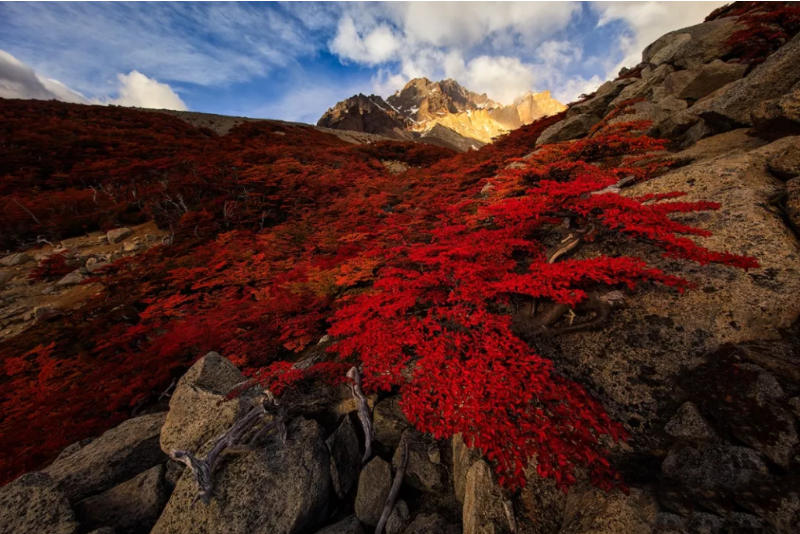
The coastline, Andes Mountains, Amazon rainforest, and Pampas grasslands make up the key landscapes of South America. These diverse natural environments not only offer unique scenery but also shape the region’s distinct cultures, races, personalities, and customs.
Patagonia
Known as the “end of the world” due to its remote location,
this desolate land has nonetheless been a place where mountaineers have repeatedly chased and fulfilled their dreams.

Patagonia is the southernmost region of the Americas, located east of the Andes in South America and south of the Colorado River, spanning both Argentina and Chile. It’s bordered by the Pacific Ocean to the west and the Atlantic Ocean to the east, with Argentina’s Pampas grasslands to the north, and the Antarctic continent lying just across the sea to the south, truly giving it the feel of the world’s end.
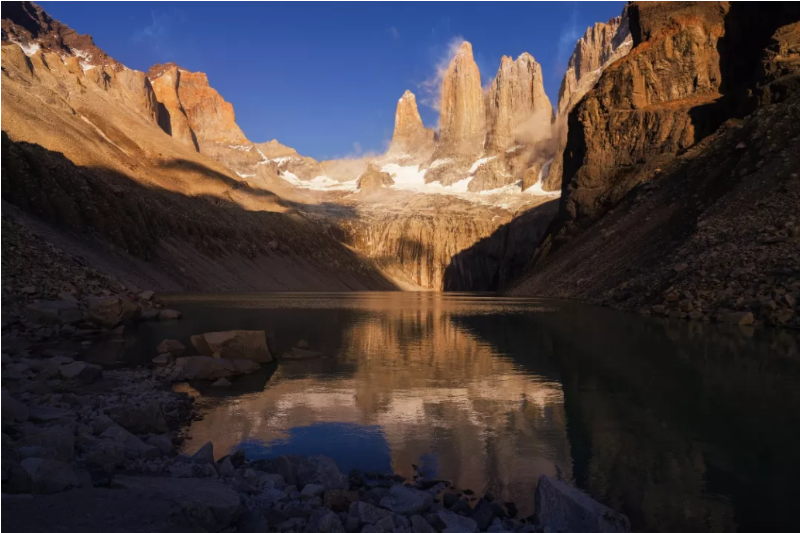
Cerro Torre is the most challenging and treacherous peak to climb in Patagonia, yet photographers are drawn to its perfect, dramatic shape. The glaciers that flow from its base spill into a nearby glacial lake, scattering brilliant blue icebergs of various sizes, adding vibrant highlights to our compositions.
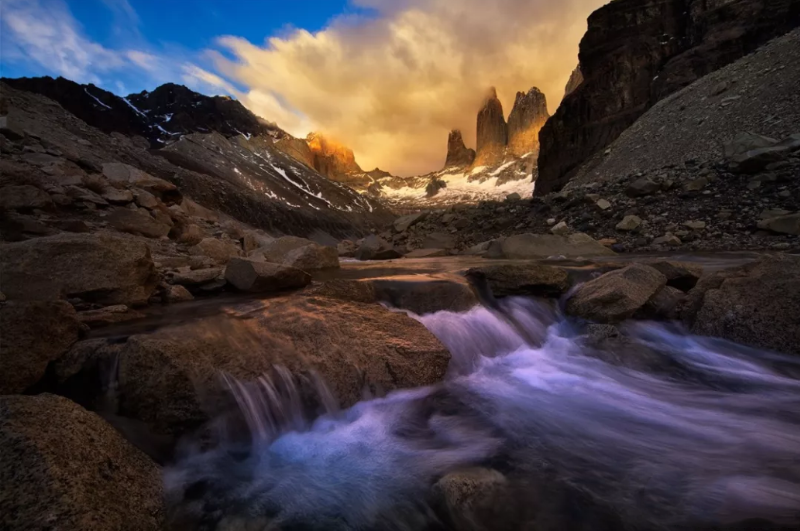
Out of nowhere, a break appeared in the thick clouds, and golden light poured out like a tidal wave, illuminating the peaks of Cerro Torre. Suddenly, I could hear an exhilarating melody in my head, my heart racing. I ran, shot, leaped, and pressed the shutter. Patagonia’s magical gateway opened for me for a full five minutes. My cameras didn’t let me down either—swift movements gave me the chance to capture more than I could have hoped for. Each shot was a perfect blend of light and shadow, with every detail—from near to far—crystal clear. From the moment the light emerged to when the world faded back into gray, my cameras captured everything I dreamed of.
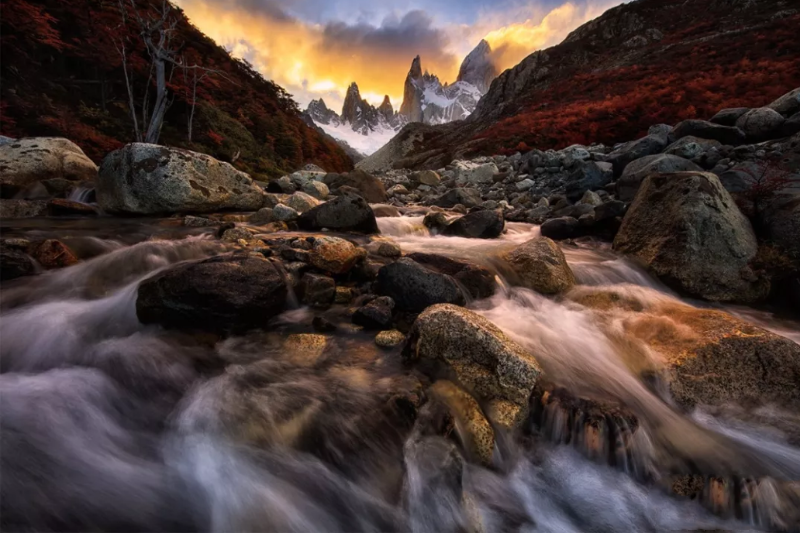
Mount Fitz Roy
Mount Fitz Roy isn’t particularly tall, standing at just 3,405 meters (11,171 feet). However, unlike most mountains with gentle, rolling shapes, it and its neighboring peaks rise sharply, almost abruptly, between the earth and sky. Towering between the low shrubs and the blue heavens, they stand like a group of snow-clad saints, their jagged edges unyielding to the fierce winds and harsh cold.
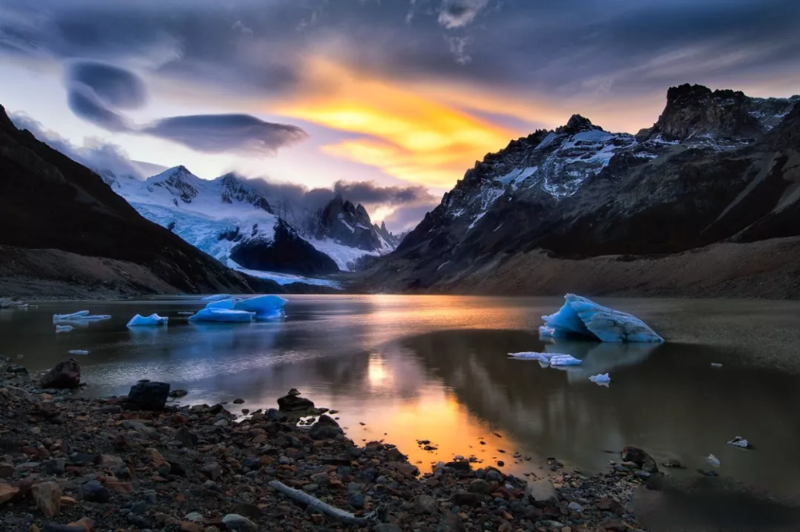
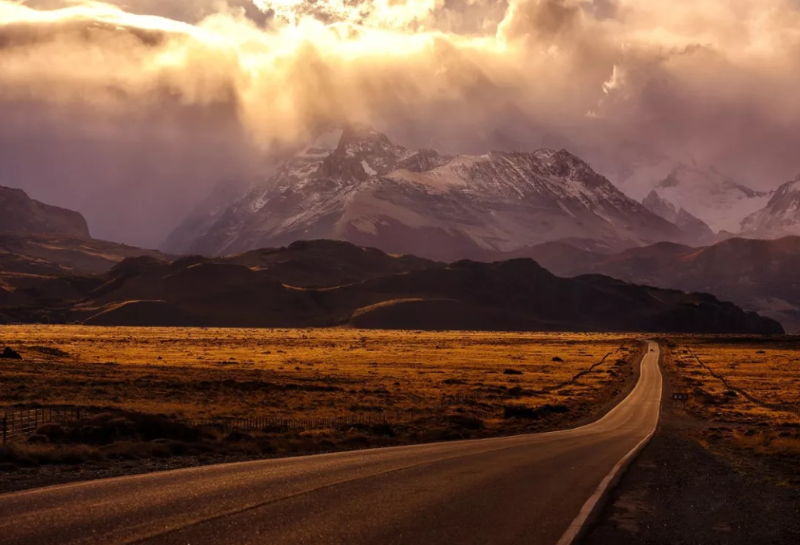
The indigenous Tehuelche people of Patagonia refer to it as “Chaltén,” meaning “smoking mountain,” due to its frequent shrouding in clouds and mist throughout the year. These nomadic Tehuelche use Mount Fitz Roy as their reference point, beginning their migration from the Atlantic coast to the Andes each summer, starting in November.
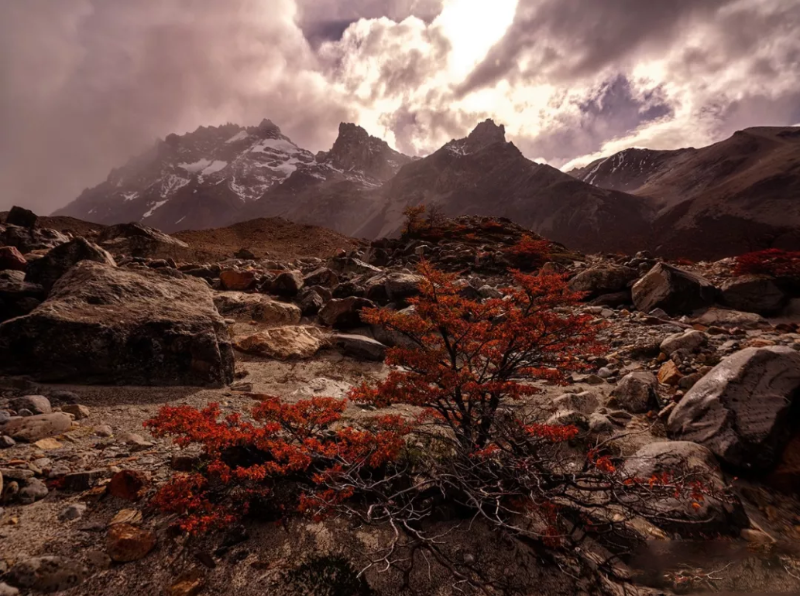
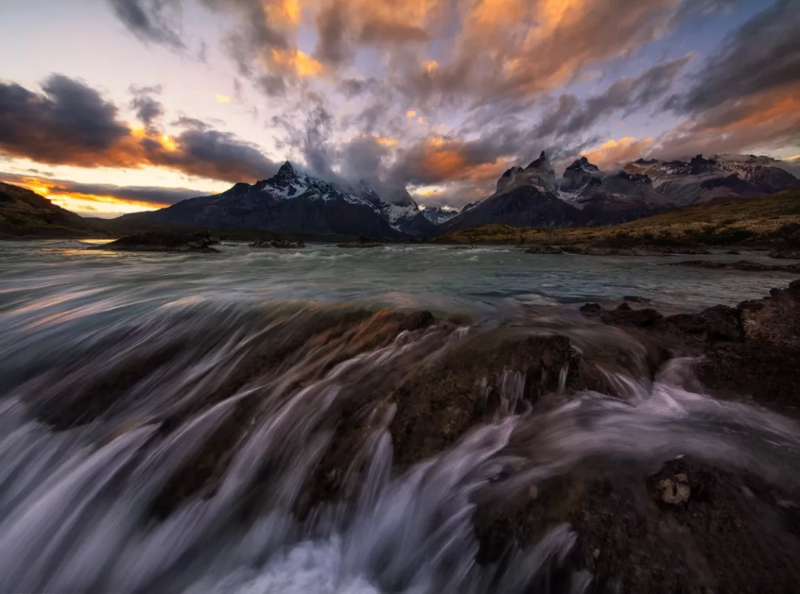
Summer is the most beautiful season for Mount Fitz Roy. At sunrise, the brilliant morning light paints the summit in shades of gold and vibrant red, while the surrounding clouds appear like flames. It’s a truly joyful time for climbers. However, the climbing difficulty of Fitz Roy, much like its unique shape, is sharp and formidable; on average, only one climber successfully reaches the summit each year.
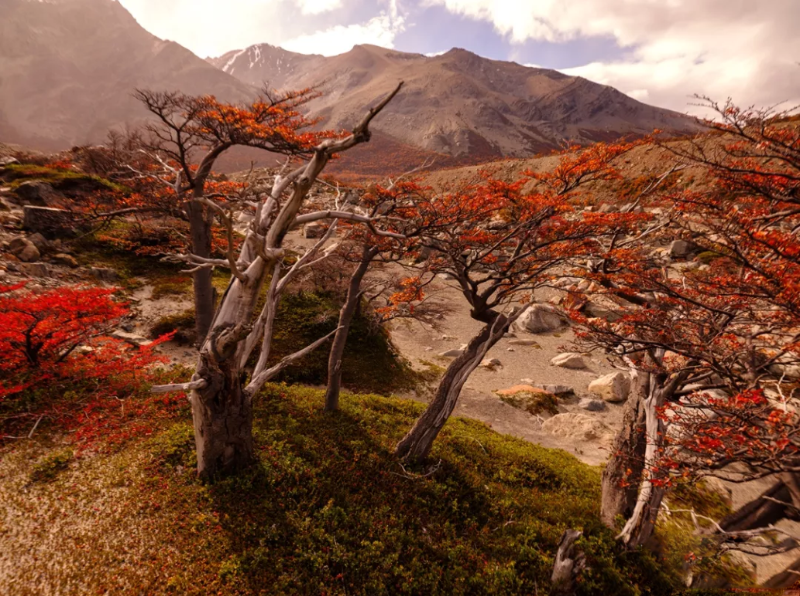
Perito Moreno Glacier
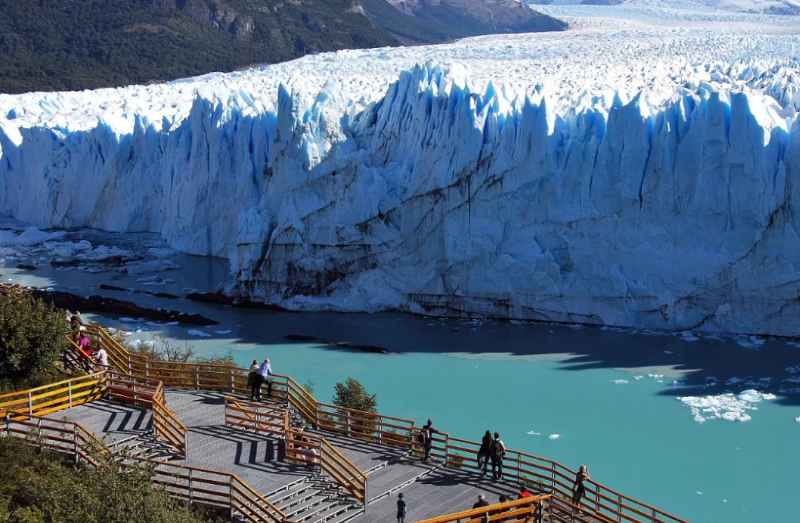
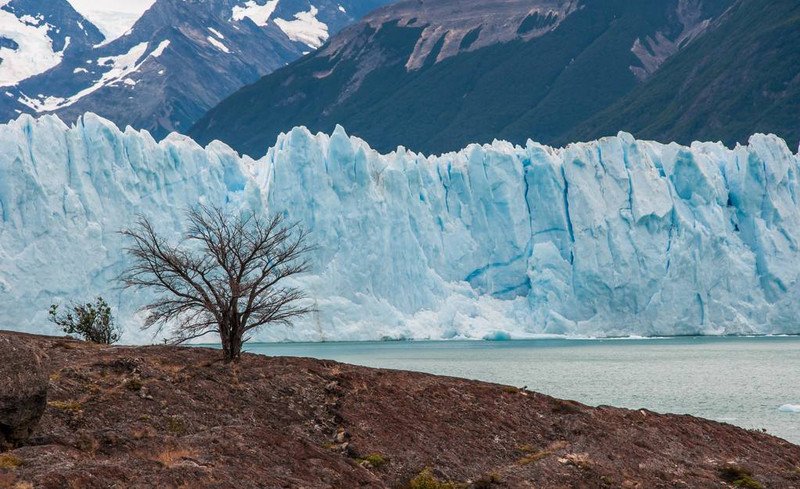
In the summer months of South America, “ice calving” occurs frequently. Massive chunks of ice break off from the glacier, which rises 74 meters above the lake, crashing into the water with a deafening roar—an announcement that life is about to enter a new cycle. Yet, just as quickly, everything returns to calm, as if nothing ever happened. In ancient times, humans might have considered this phenomenon to be supernatural; today, it still holds a sense of mystery that invites reflection. In recent years, several calving events at the Perito Moreno Glacier have created a dam of ice, linking the glacier to the opposite Magellan Peninsula. Amidst the current greenhouse effect impacting our planet, it continues to slowly transform the landscapes and ecosystems of Patagonia, standing as one of the last glacier warriors.
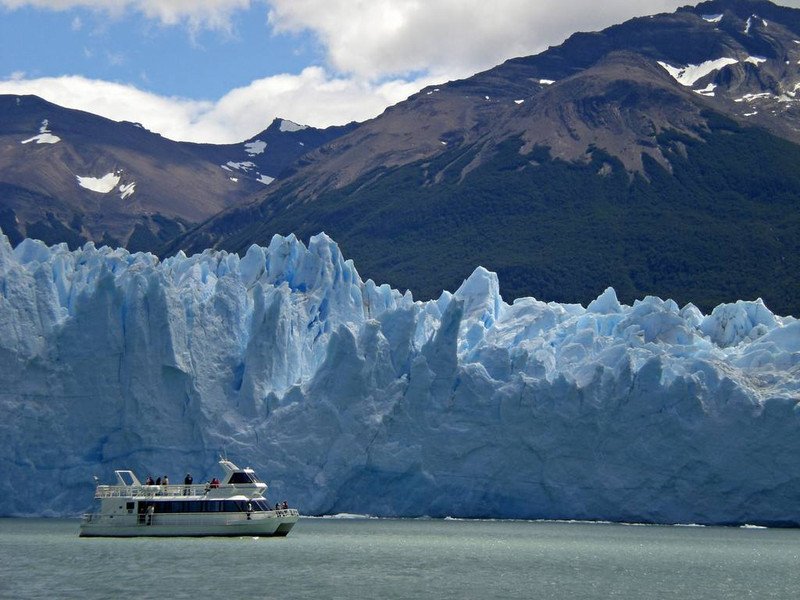
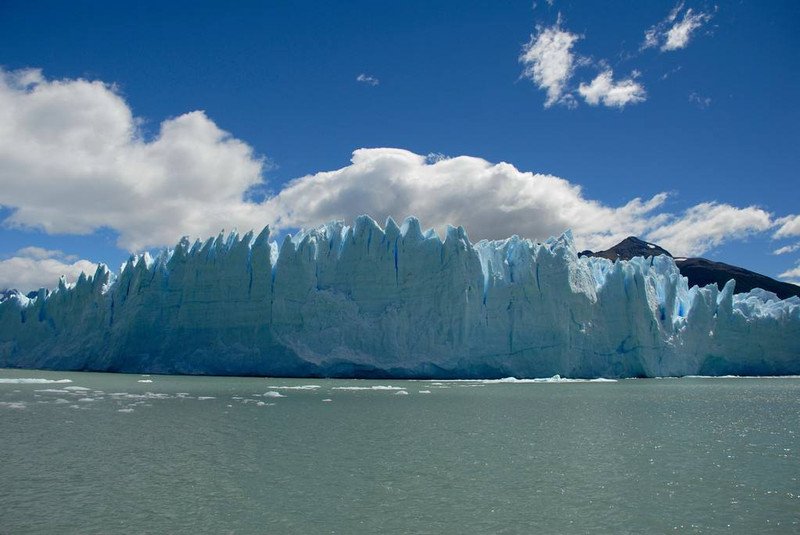
The Perito Moreno Glacier moves rapidly every day, and during its movement, the ice layers frequently crack and collapse. Coupled with the howling mountain winds, the breaking ice produces a thunderous roar when it hits the water. It collapses so often that we witnessed it happen five or six times ourselves, while countless other calvings were heard but not seen. Unfortunately, the location of each collapse is unpredictable.
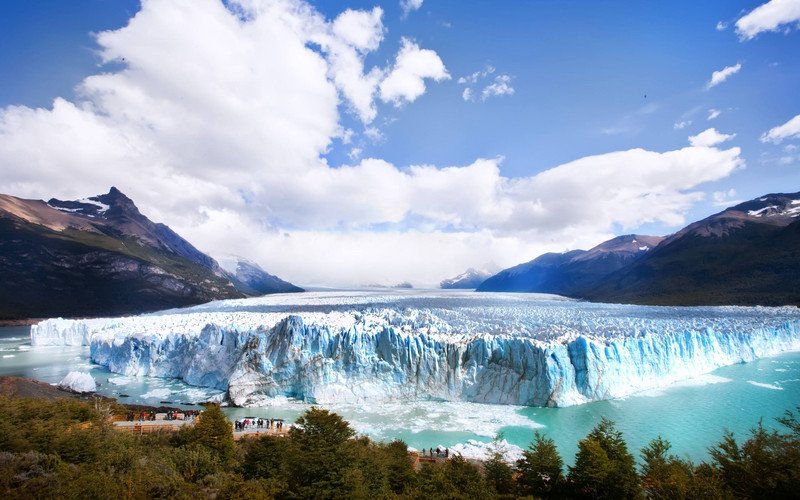
The Perito Moreno Glacier has another remarkable feature—it is one of the few remaining “expanding” glaciers in the world. Extending down from the vast ice fields, it advances towards the Magellan Peninsula at a rate of about 2 meters per day, forming an ice dam in the lake. This dam cuts off the “southern arm” of Lake Argentina from the main body, causing the water level in the southern arm to rise, sometimes up to 30 meters higher than the main lake. The pressure difference between the two sides leads to continuous erosion at the base of the ice dam, until a natural archway is formed, reconnecting the waterways. As the lake water flows through, the arch expands, and when it can no longer withstand the pressure caused by the glacier’s movement, the ice dam collapses.
Atacama Desert

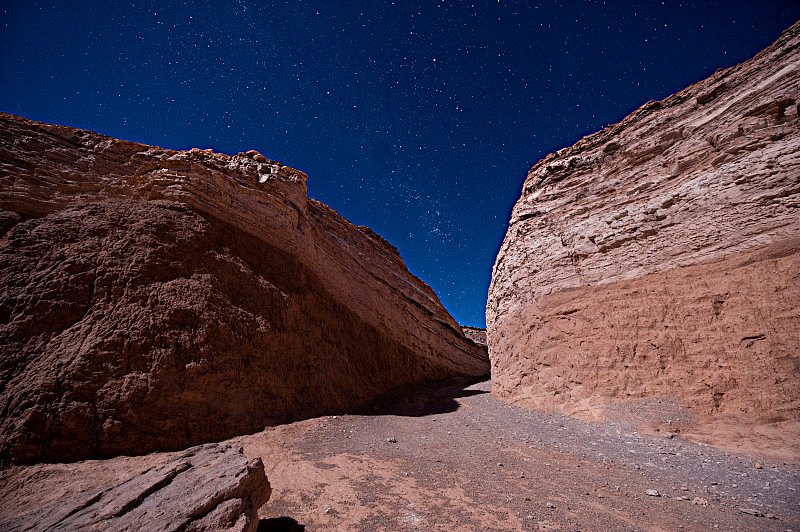
On the western side of the Andes Mountains, about 30 miles from the Bolivian border, lies Chile’s Atacama Desert, a place of breathtaking beauty that’s simply “over the top.” From here, you can head in any direction, and within just an hour, you’ll encounter an array of stunning and unique landscapes: snow-capped volcanoes, crystal-clear blue saline lakes, vibrant red rock canyons, and searing hot natural geysers—the Atacama Desert has it all. It’s no wonder this rare destination has become a popular tourist hotspot.
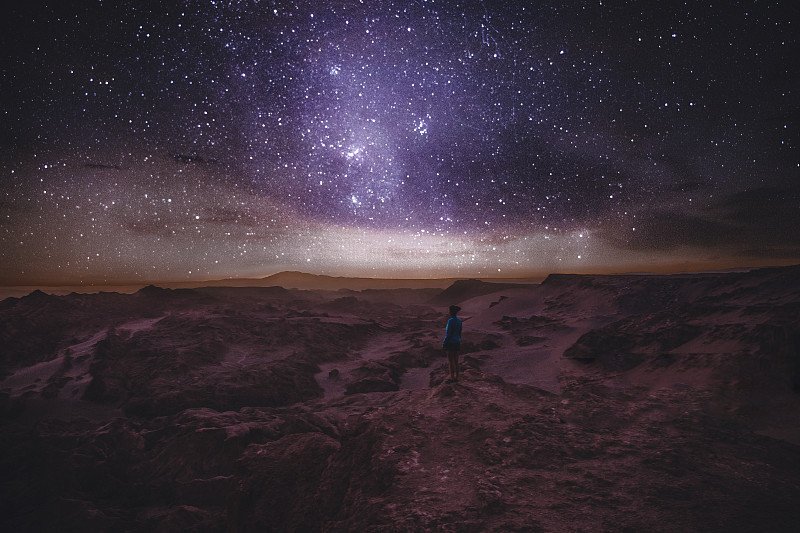
Hearing Bonafoux’s “Summer Night” unexpectedly stirred a deep affection for the starry sky within me. The limitless musings about the vast universe flowed into my thoughts, reflecting on the enigmatic nature of humanity itself. Amidst the poetic ebb and flow of yin and yang lies a momentary stillness—that is the essence of the universe, where everything is silent. Yet in this silence, there seems to be an unspoken voice narrating, whether it’s the twinkling of stars or a deeper dance of time and space. If a thousand readers have a thousand interpretations of Hamlet, how many voices of the universe can billions of souls perceive? Whether it’s Einstein’s “gravitational waves” or Heidegger’s concept of “being,” both are crystallized in this starry sky, which feels so close it might fall, yet also seems like a vast abyss, impossible to escape.
From the outside, the entire canyon looks like a massive scar on the earth, with the intricately carved rocks gleaming white—what appears to be snow is actually salt. Black sand dunes accompany the red earth, and the nearby peaks, colored by mineral deposits, exude a bizarre vibrancy, making you feel as though you’ve stepped onto Mars. I feel fortunate that I don’t have to face life and death like Watney in The Martian while still being able to appreciate this desolate beauty. For him, the more beautiful it was, the deeper the despair in the cosmos; for me, this barrenness is brewing with vitality. In the heart of the Atacama, there are no signs of life in sight. The sun relentlessly scorches the already cracked earth, evaporating every bit of moisture through the land’s tiny crevices, painting the blue canvas of the sky with it.
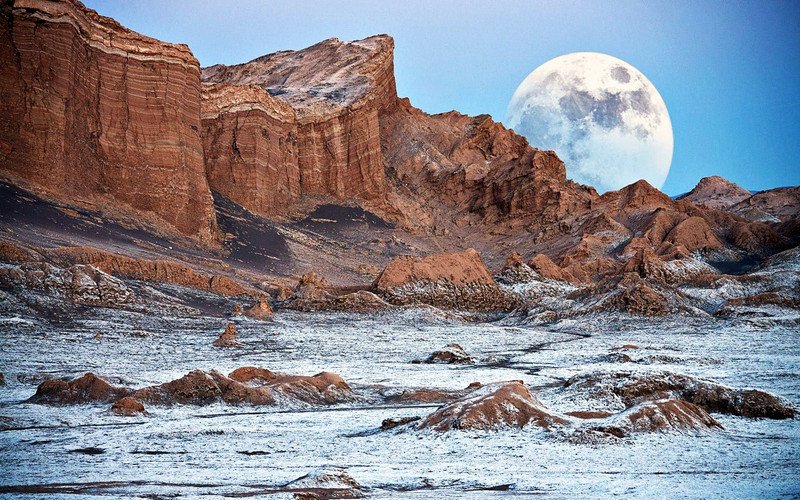
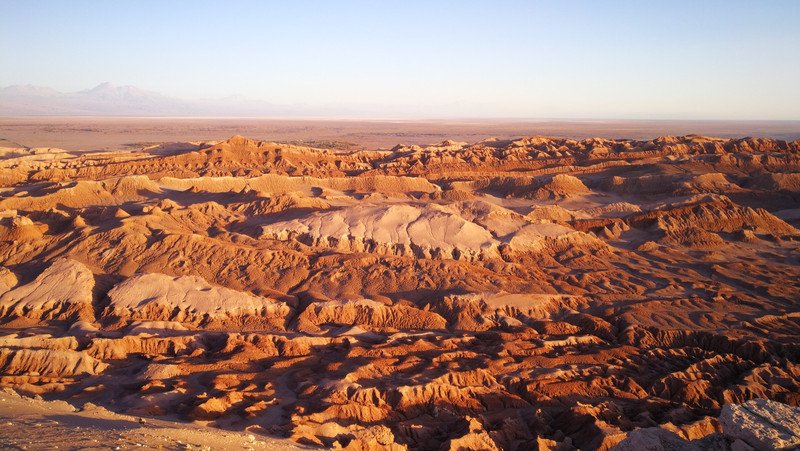
When it comes to South America, there’s a tangible sense of anticipation and longing. The way to feel it is quite simple—just start counting the place names one by one, and as you count, remember to visualize the scenes:
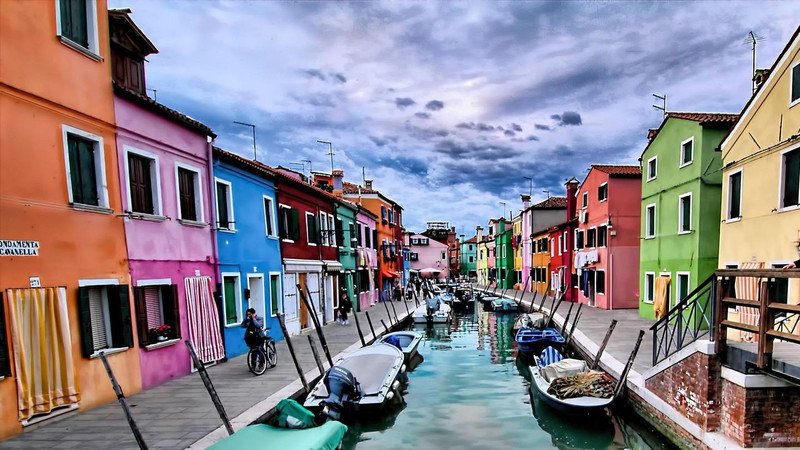
Rio de Janeiro, Brazil, with its colossal Christ the Redeemer statue spreading its arms wide;
Easter Island, Chile, lined with mysterious Moai statues facing away from the sea;
Machu Picchu, Peru, the Inca ruins perched at an elevation of 2,350 meters on the ridge;
The Galápagos Islands, Ecuador, home to giant land tortoises, marine iguanas, flightless cormorants, and the only penguins in the Northern Hemisphere;
The Salar de Uyuni in Bolivia, where the sky and earth merge into one, making it feel as if you’re floating in mid-air;
The Pampas grasslands of Argentina, where steak grows and fine wine flows;
The Andes Mountains, stretching across South America, steeped in the mysterious legends of “head-shrinkers”; and the Patagonia plateau, rising dramatically until it pierces the clouds, a heavenly realm on Earth.


